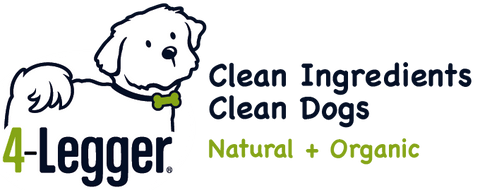Lesson 4 of Buying A Safe & Non-Toxic Dog Shampoo: Avoid These 3 Letter Ingredients!
We like tea - herbal, black, green, oolong, white, and even chai! We have even made a conditioning herbal tea rinse to use on our dogs.
So what tea do we not like? The "TEA" and chemicals just like it that may be in dog shampoo!
What is TEA?
TEA, MEA, and DEA are in a group of chemicals called ethanolamines. The ethanolamines are made from alcohol (ethanol) and proteins (amines) that have ammonia-like odors. Of course, manufacturers use artificial fragrance to cover up the ammonia-like odors so you don't smell them.
What do they do?
Ethanolamines are popular in dog shampoo because they create a creamy and thick texture with lots of foam.
Ethanolamines are so prevalent in dog shampoo that when consumers try a certified organic product (which are not allowed to use these chemicals), they are often surprised at the consistency of organic dog shampoos and say they are as thin as water!
Why Should You Be Concerned?
When ethanolamines are used in the same product as certain preservatives or other ingredients, they break down into nitrogen and can form what is called nitrosamines. The nitrosamines are a class of chemicals that are are thought to be carcinogenic, have reproductive toxicity, developmental toxicity, and organ system toxicity.
Within the United States, the FDA does monitor the levels of nitrosamines in human cosmetics and have cut the allowed levels in half since the 1980s.
According to scientists from San Jose University, a common nitrosamine impurity “is readily absorbed through the skin and accumulates in organs, such as the liver, bladder, etc. where it induces chronic toxic effects” (Matyska et al. 2000). The International Agency for Research on Carcinogens has found that nitrosamines are carcinogenic in all animal species studied, including primates. No other carcinogen has been found to cause cancer in as many species as nitrosamines. (IARC, 1978; 1982; 1985; 1987).
Unfortunately, there are no regulations on ethanolamines or set limits for what is considered safe in pet products.
Lesson 4: Eliminate all Ethanolamines
What to look for on the label?
There are a lot of names for MEA, DEA, and TEA. Here are some of the more common:
- MEA: monoethanolamine
- DEA: diethanolamine
- TEA: triethanolamine
- Triethanolamine
- Diethanolamine
- Cocamide DEA
- Cocamide MEA
- DEA-cetyl phosphate
- DEA oleth-3 phosphate
- Lauramide DEA
- Linoleamide MEA
- Myristamide DEA
- Oleamide DEA
- Stearamide MEA
- TEA-lauryl sulfate
Look at Lesson 5 of buying a truly natural dog shampoo!
Sources:
Matyska MT, Pesek JJ, Yang L. (2000). Screening method for determining the presence of N-nitrosodiethanolamine in cosmetics by open-tubular capillary electrochromatography. J Chromatogr A. 2000 Jul 28;887(1-2):497-503.
International Agency for Research on Carcinogens (IARC) (1978). IARC Monograph. The evaluation of the carcinogenic risk of chemicals to humans Some N-Nitroso compounds.
International Agency for Research on Carcinogens (IARC) (1982). N-Nitroso compounds: occurrence and biological effect. Sci. Publ. No. 41.
International Agency for Research on Carcinogens (IARC) (1985). IARC Monograph. The evaluation of the carcinogenic risk of chemicals to humans Tobacco habits other than smoking, betel-quid, areca-nut chewing and some related nitrosamines.
International Agency for Research on Carcinogens (IARC) (1987). The relevance of N-nitroso compounds to human cancer: exposure and mechanisms. Sci. Publ. No. 84.





